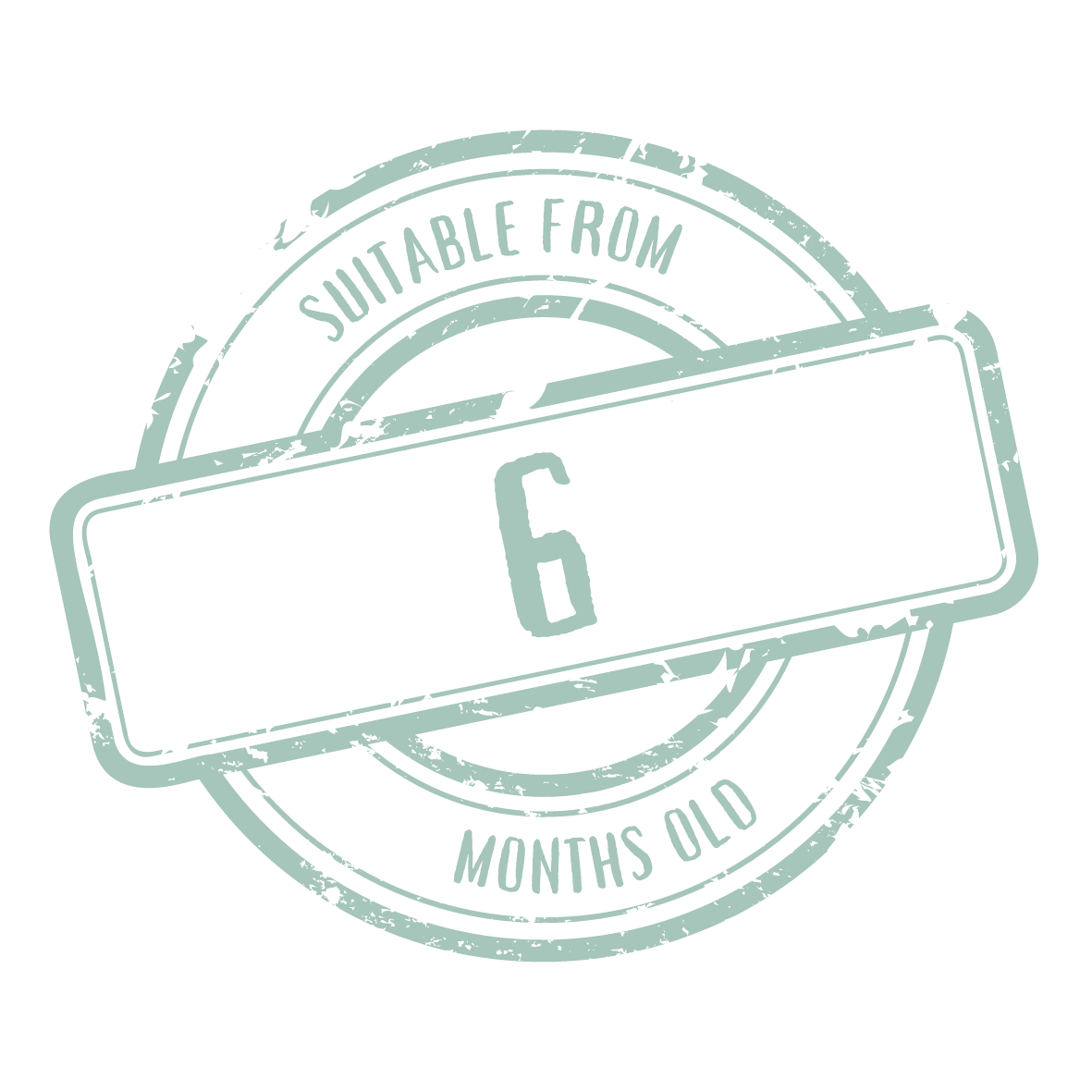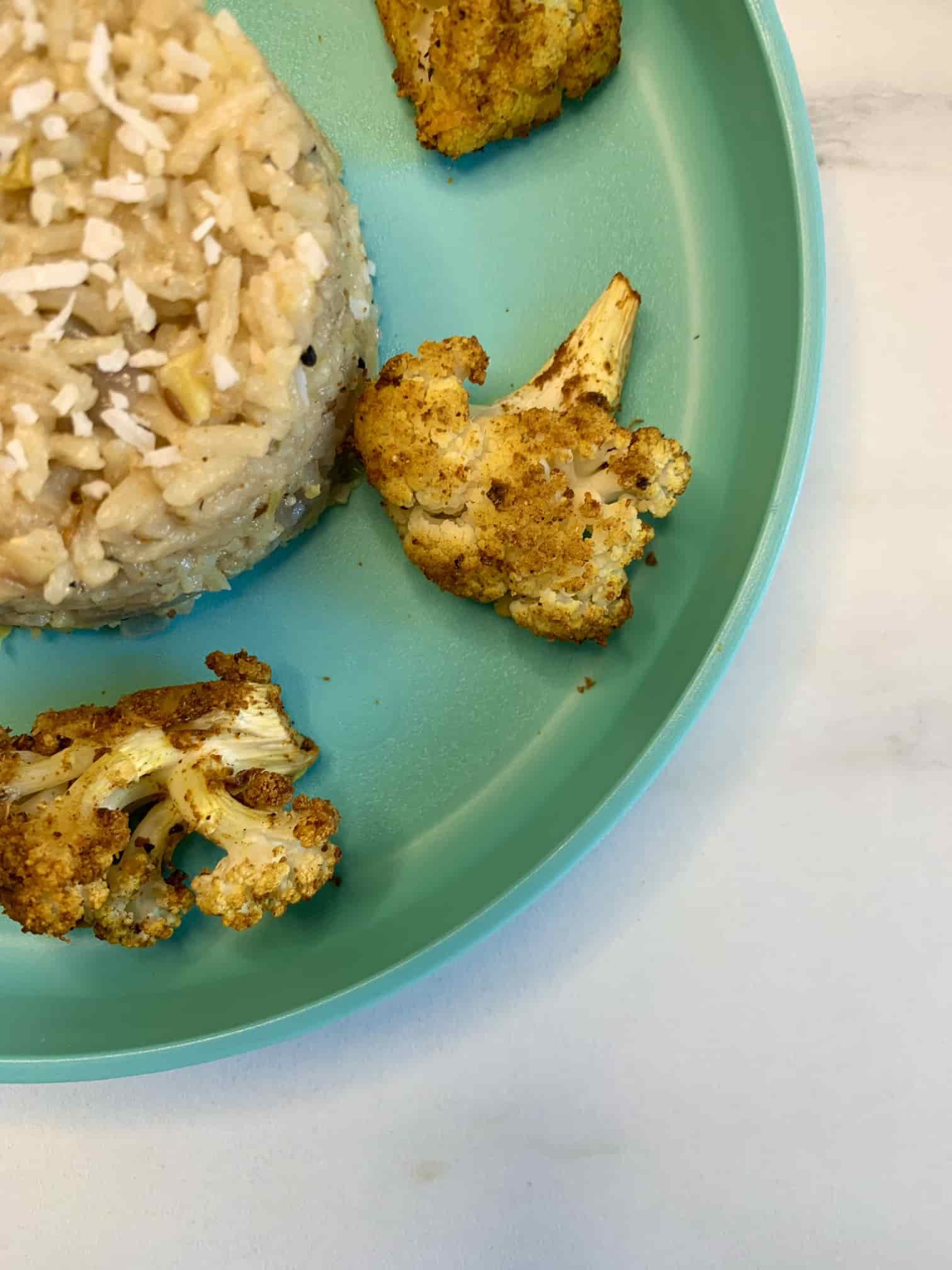Easy Vegetarian Pilau Rice For Baby Led Weaning
Table of Contents
How To Prepare Rice For Baby Led Weaning?
When cooking rice for baby-led weaning, it's essential to ensure that the rice is cooked to a soft and easy manageable texture to prevent any choking hazards for your little one. This vegetarian pilau rice for baby led weaning is a great way to introduce rice and spice to baby.
Here is a simple guide to preparing rice for baby-led weaning:
Choose the Right Rice: Opt for easy-to-digest rice varieties such as white rice.
Avoid rice with added seasonings or flavours to keep it simple for your baby's sensitive palate.
Rinse the Rice: Before cooking, rinse the rice thoroughly to remove any excess starch.
This helps prevent the rice from becoming too sticky, making it easier for your baby to handle.
Cooking the Rice: Cook the rice according to the instructions on the packet, (cooking time may vary).
For baby-led weaning, ensure that the rice is well-cooked and soft. You can cook it in water or homemade low salt stock for added flavour.
Serve Appropriately: Once the rice is cooked, allow it to cool slightly before serving it to your baby.
You can serve the rice in small, manageable pieces for your baby to pick up and self-feed.
Remember to supervise your baby closely during mealtimes.
Experiment with Combinations: As your baby gets accustomed to eating rice, you can gradually introduce different foods to create balanced meals.
Consider mixing the rice with steamed vegetables, finely chopped fruit, or protein sources like slow cooked chicken or tofu.
Be Mindful of Allergens: Introduce new foods one at a time and observe your baby for any signs of allergies or sensitivities.
Rice is generally well-tolerated, but it's essential to be cautious when introducing new foods.
Remember, every baby is different, so it's crucial to adapt the preparation method to suit your baby's preferences and developmental stage.
With patience and a watchful eye, introducing rice can be a nutritious and exciting part of your baby-led weaning journey.
What Is The Difference Between Rice And Pilau Rice?
Rice and pilau rice are both popular staples in many cuisines, but they differ in their preparation methods and ingredients.
Rice is a versatile grain that is a dietary staple for a large portion of the world's population.
It is typically cooked by boiling in water until the grains absorb the liquid and become soft.
Rice can be served plain or flavoured with spices, herbs, or other ingredients.
Pilau rice, on the other hand, pilau rice is a dish where the rice is a richer flavour and can include additional ingredients such as vegetables or meat.
The sautéing process helps to coat each grain of rice with the oil or butter, resulting in a more flavourful and aromatic dish compared to plain boiled rice.
In summary, the main difference between rice and pilaf rice lies in the preparation method and additional ingredients used.
Rice is typically boiled in water, while pilaf rice is sautéed before cooking, giving it a more complex flavour profile.
The Benefits Of Rice For Baby
Rice is a popular choice for baby-led weaning due to its soft texture and mild flavour, making it easy for babies to grasp and chew.
It is also a good source of carbohydrates, which provide energy for growing infants.
Rice is gluten-free, making it suitable for babies with gluten sensitivities.
Additionally, rice can be easily combined with other foods like vegetables, fruit, and proteins to create a balanced and nutritious meal for babies.
Introducing rice early on can help babies develop their chewing and swallowing skills, promoting independence and self-feeding.
Remember to offer a variety of foods to ensure a well-rounded diet for your baby during this crucial stage of development.
Can I Add Meat To The Recipe?
Yes! Adding meat to pilau rice is a great way to enhance both the flavour and protein content of the dish.
You can incorporate slow-cooked chicken or slow-cooked beef to create a hearty and satisfying meal.
These meat options bring their unique textures and richness to the pilau, elevating it to a more substantial dish.
For a vegan alternative, consider adding tofu to the pilau.
Tofu can absorb the flavours of the spices and stock, creating a delicious plant-based version of the dish.
Whether you choose meat or tofu, both options can complement the pilau rice recipe beautifully, a healthy family dinner for the whole family.
From What Age Can Baby Eat Rice?
Babies can typically start to experiment with rice around six months of age when they show signs of readiness for feeding beyond breast milk or formula.
Baby-led weaning, a method where babies self-feed soft, age-appropriate foods, can include offering cooked rice in manageable sizes and textures for the baby to explore.
Perfect for babies first food and great for little hands to pick up.
It's crucial to ensure that the rice is properly cooked to a soft consistency to minimise any choking hazards.
As with any new food introduction, it's advisable to consult with a health visitor before starting solids.
Including rice, to ensure it aligns with the baby's developmental stage and dietary needs.
Ingredient information
Basmati rice - I have used basmati rice for this rice dish, you could use brown rice, jasmine rice or long grain white rice too it is completely up to you, the recipe will work with any rice.
You could use a sticky rice such as sushi rice or risotto rice and you could turn this recipe into a rice balls recipe!
Onion - I have used a white onion but you can use a red onion or a couple of banana shallots if you like.
Garlic - I have used cloves of garlic but you could use garlic granules, garlic powder or garlic puree.
Ginger - I have used ginger puree as this is what I had, but you can use a 2 cm peeled and grated fresh piece of ginger too.
Leek - You could use an extra onion instead of the leek if you did not have a leek.
Cauliflower - The cauliflower is a great addition to this recipe and a nutritious addition, perfect for baby-led weaning.
Curry powder - I have used a no added salt curry powder, but you can use a curry powder of your choice.
Cumin seeds - I have used cumin seeds for added flavour, but you can use cumin powder too if you wish.
Coriander - You can use fresh coriander if you wish.
Curry leaves - These are great for added flavour, but you can leave these out if you did not have any in the cupboard.
Nigella seeds - These are great for flavour, I love adding to curry dishes and naan breads.
Black pepper - This is for seasoning, without using any salt.
Vegetable stock cube - I have used a zero salt stock cube, but you can use a low salt stock cube or a zero salt-low salt chicken stock cube for non veggie eaters.
Alternatively you could use coconut milk!
Garam masala - This is to flavour the cauliflower and works really well within the whole recipe too.
Turmeric - `This is also to flavour the cauliflower and works really well for flavour and colour.
Serving suggestion
This is great as a stand alone meal for vegetarian or vegan babies.
You could of course serve the recipe with a protein such as tofu to keep with the vegan/vegetarian theme. But you can serve with meat such as a grilled chicken.
Other similar recipes: Red lentil dal, Baked Cauliflower or Black eyed peas curry.
Dessert recipe: Baked rice pudding.
Storage instructions
The rice can be stored in the fridge for up to 3 days, stored in an airtight container.
Make sure the rice is at room temperature before it is transferred to the container. The rice tastes great when eaten the next day.
If you wanted to freeze the rice, you will need to make sure that the rice has cooled down before transferring to either a freezer bag (carefully) or airtight container.
Ensure that the bag/airtight container is labelled with the item and the date. I use masking tape to label the airtight container.
To defrost the rice, leave in the fridge overnight and make sure that it is fully defrosted, before re heating.
To reheat, place the defrosted rice in a saucepan and reheat on a medium heat for 15-20 minutes.
You can add in a splash of water to loosen the rice.
Make sure the rice is piping hot before, and then leave to cool to an acceptable temperature before serving to your baby.
Once the rice has been defrosted you will not be able to reheat or re freeze.
Equipment used to help with this recipe
Saucepan - So many pan sets out there but I particularly like to use pans with a non-stick surface for ease of cleaning and ones that are suitable for different types of hob surface.
Airtight container - I much prefer the click-shut lids on these containers compared to others.
They are also dishwasher and freezer safe and BPA free, so very suitable for food use.
Curry powder - I found and liked this curry powder that is mildly spiced and, more importantly, salt free.
Zero salt stock cube - When I first went looking for reduced salt stock cubes for my baby led weaning recipes, it felt like a bit of a mission!
In the end I found some online and these ones are actually salt free.
Recipe | Easy Vegetarian Pilau Rice For Baby Led Weaning






Easy Vegetarian Pilau Rice For Baby Led Weaning
Ingredients
Instructions
- Start by preheating your oven to 180C or 350F.
- Take your cut cauliflower and place in a medium sized oven dish. Add in the oil and spiced and coat the cauliflower.
- Pop into the oven for 20 minutes.
- To make the pilau, take a large saucepan, and add in the oil and heat on a medium heat.
- Add in the onion and the leaks, cover and cook on a medium to low heat for 15 minutes until soft.
- Add in the garlic, ginger and cumin seeds and stir.
- Turn down the heat and add in the curry powder, coriander, curry leaves, nigella seeds if using, black pepper and stir.
- Next, add in the rice and stir to coat the rice with the spices. Add in the stock cube.
- Pour in the hot water, bring to the boil, cover and cook on a medium to low heat for 40 minutes until soft.
- Add in the baked cauliflower and serve. You can serve on its own or with a protein of your choice, such as grilled chicken, baked cod or tofu.
Notes
This is a great recipe if you have any leftover rice to use up!
I always seem to prepare too much rice for meals, so this is a great recipe would be perfect if you had a lot of rice to use up!
©The Petit Spoon
Content and photographs are copyright protected and need prior permission to use elsewhere. Copying and/or pasting full recipes to other websites and any social media is strictly prohibited. Sharing and using the link of this recipe is both encouraged and appreciated! Share this post now!










A fun Easter bunny bento box recipe for your little one! Packs a punch with vitamins and minerals, all in a sandwich lunch! Quick, convenient and simple too!